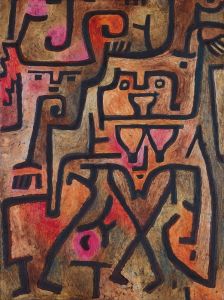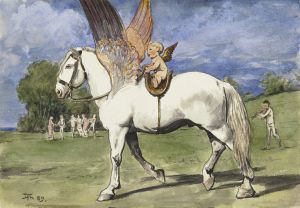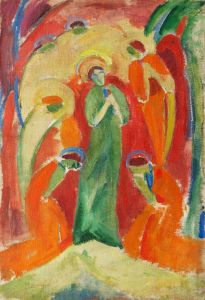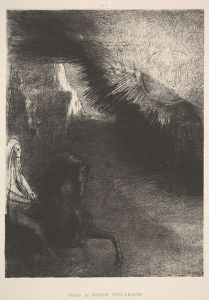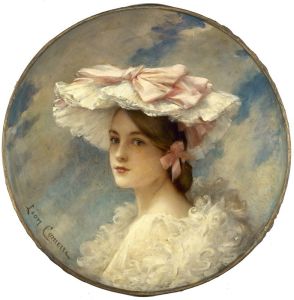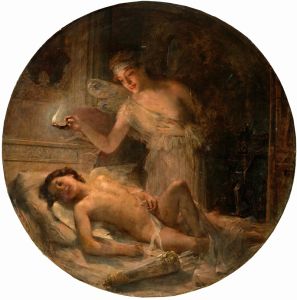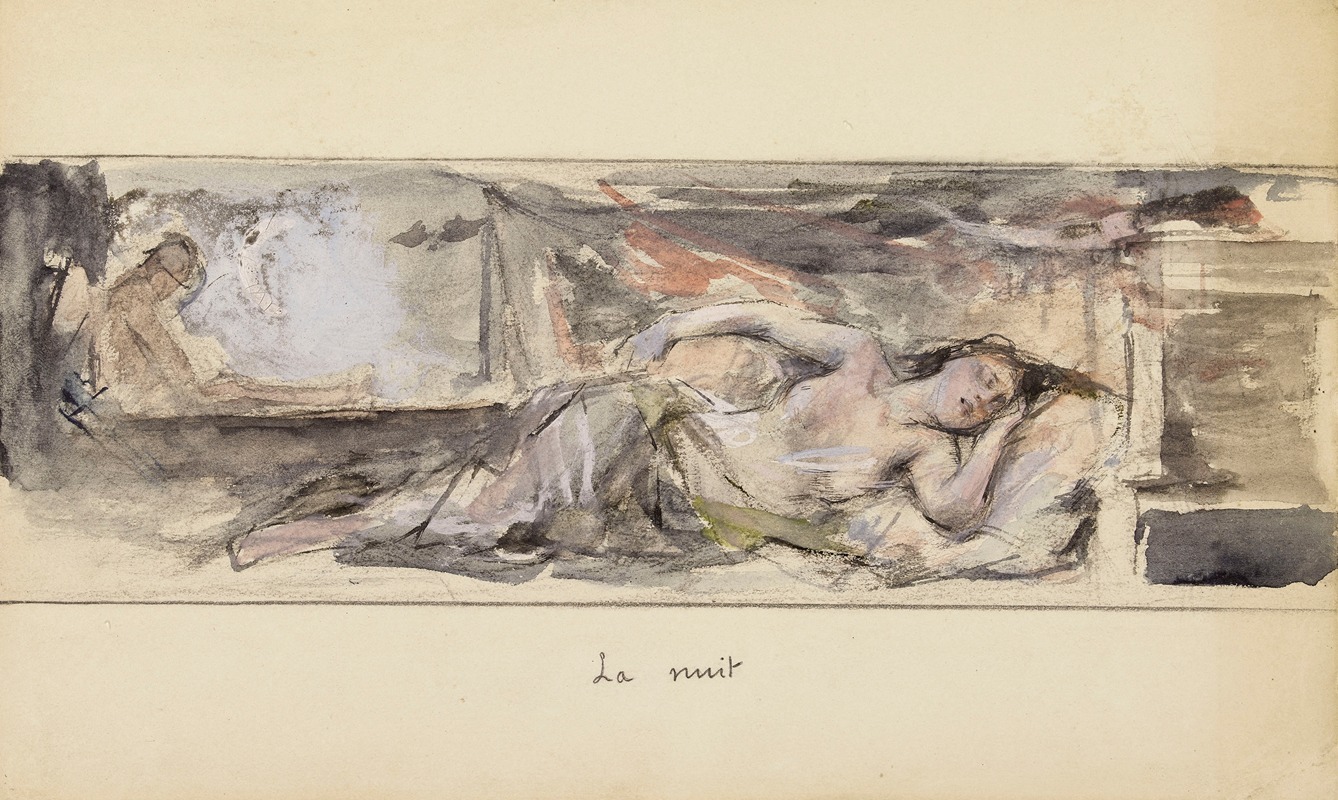
La Nuit
A hand-painted replica of Léon François Comerre’s masterpiece La Nuit, meticulously crafted by professional artists to capture the true essence of the original. Each piece is created with museum-quality canvas and rare mineral pigments, carefully painted by experienced artists with delicate brushstrokes and rich, layered colors to perfectly recreate the texture of the original artwork. Unlike machine-printed reproductions, this hand-painted version brings the painting to life, infused with the artist’s emotions and skill in every stroke. Whether for personal collection or home decoration, it instantly elevates the artistic atmosphere of any space.
Léon François Comerre was a French academic painter known for his portraits and genre scenes, often depicting women in exotic or allegorical settings. One of his notable works is "La Nuit," which translates to "The Night." Comerre was born on October 10, 1850, in Trélon, France, and he studied at the École des Beaux-Arts in Paris, where he was a student of Alexandre Cabanel. His work is characterized by a meticulous attention to detail and a rich use of color, which are evident in "La Nuit."
"La Nuit" is an oil painting that exemplifies Comerre's fascination with allegorical themes and his skill in rendering the human form. The painting portrays the personification of night, often depicted as a serene and ethereal female figure. Comerre's depiction aligns with the traditional allegorical representations of night, which are common in Western art. The figure in "La Nuit" is typically shown enveloped in flowing drapery, which adds a sense of movement and grace to the composition. The use of dark, muted colors in the background contrasts with the lighter tones of the figure, creating a striking visual effect that draws the viewer's attention to the central subject.
Comerre's technique in "La Nuit" reflects his academic training, with a focus on smooth brushwork and a polished finish. The painting's composition is carefully balanced, with the figure of night often surrounded by symbols associated with the evening or the celestial, such as stars or a crescent moon. These elements serve to enhance the allegorical nature of the work, inviting viewers to contemplate the themes of tranquility and mystery associated with the night.
Throughout his career, Comerre received numerous accolades for his work, including the prestigious Prix de Rome in 1875, which allowed him to study in Italy. His paintings were exhibited at the Paris Salon, where they were well-received by critics and the public alike. Comerre's ability to blend classical techniques with imaginative subject matter made him a prominent figure in the academic art scene of his time.
"La Nuit" is a testament to Comerre's artistic vision and his ability to convey complex themes through the medium of painting. While specific details about the painting's provenance or current location may not be widely documented, it remains an important example of Comerre's oeuvre and his contribution to 19th-century French art. The painting continues to be appreciated for its aesthetic qualities and its embodiment of the allegorical tradition in art.
In summary, Léon François Comerre's "La Nuit" is a significant work that showcases the artist's technical skill and his interest in allegorical themes. Through its depiction of the night as a graceful and enigmatic figure, the painting invites viewers to explore the symbolic meanings associated with the nocturnal world. Comerre's legacy as an academic painter is reflected in the enduring appeal of works like "La Nuit," which continue to captivate audiences with their beauty and depth.







